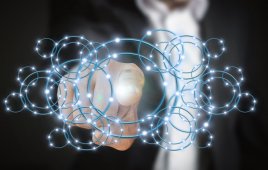Editor’s note: This article, from NREL on May 22, 2018, should be of interest to wind industry advocates because the 21st-century transportation fleet will be powered more by renewable energy derived fuels such as hydrogen and batteries. But before that, the fuel must be electrolyzed and stored, and that will call for wind-generated power.
New and enhanced versions of NREL’s Future Automotive Systems Technology Simulator (FASTSim) are now available for free download in Python and Microsoft Excel formats at www.nrel.gov/fastsim.
FASTSim is said to facilitate large-scale evaluation of vehicle performance under a range of driving conditions.
FASTSim provides a quick and simple way to compare powertrains and estimate the impact of technology improvements on light-, medium-, and heavy-duty vehicle efficiency, performance, cost, and battery life. It accommodates a range of vehicle types, including conventional vehicles, electric-drive vehicles, and fuel cell vehicles.
“The versions of FASTSim recently posted on the website feature a wider vehicle range capability and updated vehicle models along with the addition of fuel cell vehicles to the roster of vehicle types,” said NREL Senior Engineer Aaron Brooker.
The software facilitates large-scale evaluation of vehicle performance under a range of driving conditions. This flexible simulation tool lets researchers quantify relative energy consumption differences among a variety of vehicle or powertrain alternatives and determine how these differences change in varying driving environments or applications.

FASTSim is a key component of NREL’s arsenal of integrated modeling and analysis tools designed to overcome technical barriers and accelerate the development of advanced transportation technologies.
FASTSim can perform an assortment of tasks extremely quickly using basic computing resources:
- < 0.1 second to simulate second-by-second standard duty cycles
- < 10 seconds to estimate vehicle efficiency, fuel economy, acceleration, battery life, and cost
- < 5 minutes to perform powertrain comparisons of efficiency and cost.
The default model includes a variety of vehicles and drive cycles—including standard U.S. drive cycles as well as European and Japanese cycles—and an option for adding additional vehicles and custom cycles.
“We developed two versions of FASTSim to accommodate a wider array of analyses,” Brooker added.
The easy-to-use Excel version features an interactive user interface that simplifies the process of importing new vehicle data and custom drive cycles. In addition to calculating energy consumption, the Excel version of FASTSim enables life-cycle cost comparisons, battery life comparisons, component sizing tradeoffs, and more. It can also handle design-of-experiment inquiries.
The Python version of FASTSim is compatible with large datasets. Pairing with the Transportation Secure Data Center, for example, facilitates simulations of multi-day travel incorporating vehicle dwell times. When paired with geo-spatial duty cycles, FASTSim helps users draw conclusions at the regional level by incorporating such factors as temperature, roadway characteristics, or driving behavior.
The Python version of FASTSim is also customizable for performing more specific analyses. The component models in the Python version are easily expandable and can be adjusted to incorporate additional energy consumption impacts. Model flexibility and speed simplify A/B comparisons for a vehicle powertrain, control strategy, or technology. Its large number of included vehicles and computational efficiency makes calculating impacts at the fleet-level easy.
FASTSim is a key component of NREL’s arsenal of integrated modeling and analysis tools designed to overcome technical barriers and accelerate the development of advanced transportation technologies and systems that maximize energy savings and on-road performance.
Learn more about NREL’s sustainable transportation research.
Filed Under: Software




